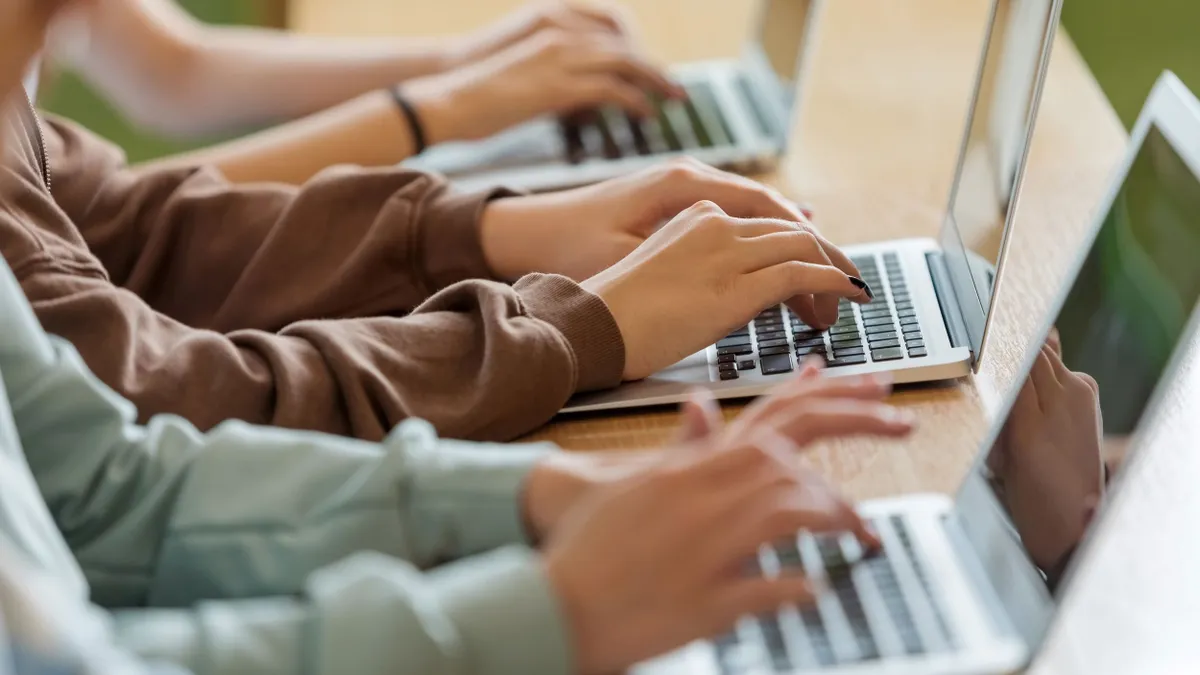Online courses tend to better meet the needs of working adults, who now make up 40 percent of college enrollments, and many colleges are adding or expanding digital programs to attract older students.
That’s especially true for schools like Riverland Community College, a public two-year school with three campuses in Austin, Albert Lee and Owatonna, all in rural southeastern Minnesota, where administrators say they can’t rely on traditional students to stay afloat. For instance, Riverland’s Austin campus serves about 3,300 students in a town of 25,000 people.
“You are at the mercy of demographics,” said J.C. Turner, who directs Riverland's new online FlexPace program. “Over time, the population shifted and the number of younger students continued to drop. To stay viable as an institution, Riverland had to look to creating online courses. Now more than half of our full-time students are in some type of online program.”
Riverland created FlexPace last year specifically for working adults. It not only provides online classes, but accelerates courses so students can earn a business certificate in under a calendar year.
“I met one student who was almost in tears,” Turner said. “She was in her 40s, and because of her schedule and responsibilities, figured it would take her more than a decade to earn a two-year degree. We needed to address that."
FlexPace condenses classes into six-week sessions, allowing students to enroll in three courses per semester. Students complete courses — such as introduction to business, business law or marketing principles — on their own time and must show mastery of material before moving on to the next class. Because FlexPace courses have specific start times, it is not considered a true competency-based program, which would need to follow specific federal rules and regulations.
The program is popular, Turner said. Administrators opened FlexPace to 10 students, but it filled up so quickly they doubled the number of learners, and still turning about 40 people away. School leaders hoped for a 50 percent increase in the overall number of business students, but saw a jump of 115 percent.
Turner said that about 900,000 adults in Minnesota are considered under employed, meaning they could move up to a higher paying job if they had the proper training or a college degree. And by 2020, about 70 percent of jobs will require some sort of higher education, he noted, and many companies offer employees some tuition reimbursement to attend college.
“This really is a group colleges need to do a better job of accommodating,” the administrator said.
The pilot required creative thinking in registration and administration, Turner said. Student record systems set up for traditional semesters were modified, and the timing of financial aid payments needed to change.
Those growing pains, however, are worth it.
“These students are motivated to do well,” Turner said. “They are dedicated and bring real-world experience into the classrooms. We tried something different, and we had administrators willing to let us do that. We feel really good about that.”
Riverland administrators are looking at ways to expand the program to majors other than business. The community college received a $25,000 grant to test the program throughout the Minnesota state college and university system.
Classes are taught by tenured faculty, and Riverland has brought in a few adjunct instructors to teach traditional courses. The community college may hire additional instructors if FlexPace grows sufficiently.
Another growing program
Indiana Wesleyan University also is moving quickly into the digital world to appeal to older students. “This really is a different audience,” said Lorne Oke, executive director of the Center for Learning and Innovation at IWU. “We really wanted to create a full-fledged learning experience for them online.”
That meant developing a program that provides discussion boards, web conferences and ways for students to work together on online projects.
“We don’t see it as chasing after enrollment,” Oke said. “We see it as meeting people’s needs. We get people who are in their 30s who have completed a GED and want to further their education, or those who have some school under their belt but who want to complete a degree, and those who want to get a graduate degree.”
The institution's online student population — 12,000 adult students across the U.S. and the world — far outpaces the 2,700 students at its brick-and-mortar campus. The school has been transitioning for years, and all of IWU’s programs now have an online component, Oke said. Some programs are offered completely online, and he said others may eventually be offered only online.
“What students like most is the flexibility,” Oke said. “There’s a significant change in the way students interact with learning and their expectations from a college. You need to look at new ways for students to access the content and to show their competency.”
Schools vary in ways they move to online programming. Some charge more for online courses, some less; some offer a mix of online and traditional classroom learning or use mastery-based programs. But all schools need to get into the digital game, he said.
“Most people have come to the conclusion that just providing face-to-face learning at universities is no longer sustainable,” Oke said. “You have to be Harvard to ignore the digital component. Many campuses have closed already. The old model is not sustainable, and we’re going to see more mergers, acquisitions and closings as the disruption continues.”
However, there are downsides: Online courses require students to be motivated self-starters, and some colleges don’t have the resources to make major adjustments, he said.
But the online programs have been positive for IWU. “Little old Indiana can attract both faculty and students from all over the world,” Oke said. “I think it’s fantastic people have access to education they didn’t have before. The technology that supports different kinds of learning is better, the access to content is better, there’s lots of positives.”




















